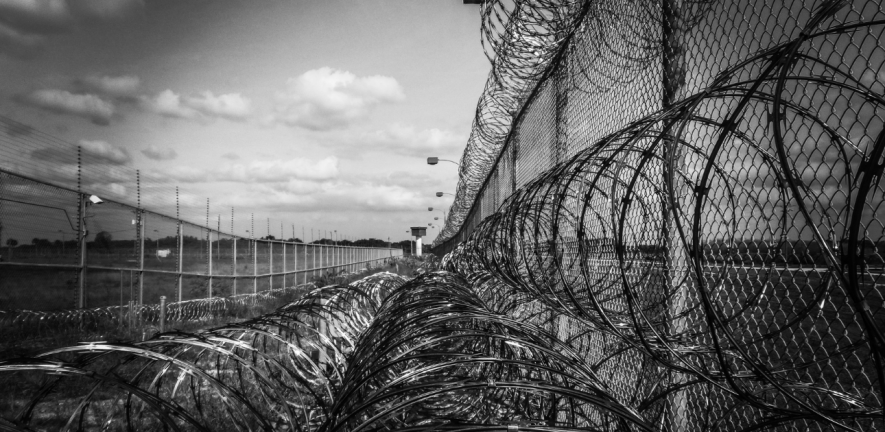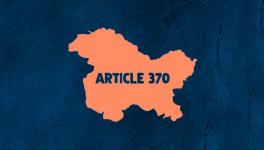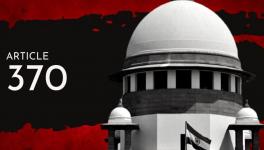‘Lawless Law’: Need for Constitutional Consideration of Detentions Under PSA in J&K

Representational Image.
Widespread concerns of the misuse of preventive detention laws necessitate a constitutional analysis of the Jammu and Kashmir Public Safety Act, 1978, through the lens of the doctrine of proportionality.
—-
In a recent judgment, in the matter of Sushanta Kumar Banik versus State of Tripura, the Supreme Court held that an unreasonable delay in passing official detention orders would vitiate the detention. The Court also made a significant observation: “preventive detention is a serious invasion of personal liberty”.
The statement is particularly relevant due to concerns of grave misuse of preventive detention laws like the Jammu and Kashmir Public Safety Act, 1978 (‘PSA’) to stifle dissent and free speech. PSA was most controversially used by the Union Government post the abrogation of Article 370 of the Constitution when several politicians and journalists were put under house arrest.
With this background, the constitutionality of PSA becomes dubious when the doctrine of proportionality is applied to it. More specifically, the constitutional issue against the PSA is grounded in Articles 21 and 22, the violation of which may be tested using the four-pronged proportionality test.
What is preventive detention and how is it used under the PSA?
Preventive detention is the confinement of a person without a criminal charge in order to prevent future harm. Such detention works on the logic of assumptions as opposed to the principle of criminal justice which requires a charge to be brought with evidence.
Article 22 of the Constitution lays down the procedure for preventive detention and provides certain safeguards to detainees.
The Jammu and Kashmir state government brought about the PSA via the Constitution (Application to Jammu and Kashmir) Order, 1954. Section 4(e) of the Order stipulated the substitution of the words “Parliament” in clauses (4) and (7) of Article 22 with the words “Legislature of the state”. Hence, pre-abrogation, the state government was well within its rights to prescribe a law for preventive detention in the state per Article 22.
Interestingly, the law was introduced to curb timber smuggling in the state. However, since the abrogation of Article 370, the law has been criticised for being used as a tool for oppression that puts “people out of circulation”, and has been termed the “lawless law”.
As per recent data, over 500 people are being held under the PSA, with unofficial numbers running into thousands. In light of this recent wave of unwarranted arrests, there arises a need to dive deeper into the constitutionality of the PSA.
The constitutionality of PSA becomes dubious when the doctrine of proportionality is applied to it.
The constitutionality of “preventive detention” per se cannot be challenged, for it is duly prescribed in the Constitution. However, it is contended that the procedure for preventive detention under the PSA may be unconstitutional.
More specifically, it may be violative of the “just, fair, and reasonable” law requirement under the golden triangle of Articles 14, 19 and 21, as established by the Supreme Court in Maneka Gandhi versus Union of India (1978).
Earlier, in A.K. Gopalan versus State of Madras (1950), the Supreme Court had established that Article 22 is a separate code in itself and a preventive detention law made under it, however restrictive, cannot be challenged under Article 21 as long as it complies with Article 22.
This “strict silos” approach of the majority in A. K. Gopalan was re-examined first in R.C. Cooper versus Union of India (1970) and later in Maneka Gandhi, in which Justice P.N. Bhagwati observed: “If a law depriving a person of ‘personal liberty’ and prescribing a procedure for that purpose within the meaning of Art. 21 has to stand the test of one or more of the fundamental rights conferred under Art. 19 which may be applicable in a given situation, ex hypothesis it must be liable to be tested with reference to Art. 14.”
The purpose of clauses (3) to (7) under Article 22 is to ensure that the interests of state security are protected while individual liberties are least compromised. As criminal lawyer Abhinav Sekhri has argued, with the introduction of ‘due process’ in Article 21 post-Maneka Gandhi, these laws could also now be tested on its threshold.
Hence, in order to avoid the conflict of due processes in both these Articles, the courts leaned towards the reasonable approach of reading them together. If a law subverts Article 22 and prescribes a different procedure, it can be challenged under the requirements of “just, fair, and reasonable” as per Article 21.
Thus, the validity of the procedure under the PSA can be challenged under a confluence of Articles 21 and 22.
How does the PSA fare when examined through the lens of proportionality?
Proportionality is a tool for constitutional analysis which entails determining whether a particular measure and the restrictions that it places on a constitutionally protected right of an individual are permissible.
The benefits of the PSA in preventing national security threats, as elaborated in the previous sections, are uncertain at best. The entire concept works on a presumption of harm; a harm that may not occur.
Indian courts have developed a structured proportionality test, through a series of cases starting with Modern Dental College and Research Centre versus State of Madhya Pradesh (2016), which entails testing the rights-limiting measure in four steps, namely legitimate purpose, suitability, necessity, and balancing.
- Legitimate purpose
To determine legitimate purpose, the court does not concern itself with the consequences of the law; rather, it limits itself to determine whether the purpose furthers a recognisable societal goal.
Apart from preventing timber smuggling, Section 8 of the PSA provides for the detention of persons on the apprehension of committing acts “prejudicial to the security of the state” and “maintenance of public order.” The legitimacy of the aims that the PSA seeks to achieve cannot be disputed in light of the precarious security conditions in the state.
The existence of preventive detention laws in liberal democratic states is justified during states of exception, which are situations when the circumstances pose a severe and catastrophic harm to the life and security of the citizens. Jammu and Kashmir has historically been fraught with violence ranging from communal disharmony to threats from neighbouring countries due to contested territory.
In light of these observations, the simple question of the legitimacy of the aims of the PSA is answered in the positive as they constitute valid interests of the State that the PSA helps in pursuing. Hence, the first prong of the test is satisfied.
- Suitability
The suitability or the rational nexus test examines the connection between the limiting law and the purpose it seeks to achieve. According to Israeli lawyer and jurist Aharon Barak, the requirement of this prong is satisfied if the rights-limiting measure sufficiently realises and advances the underlying purpose sought to be achieved.
With respect to the PSA, to be a suitable measure, it must prove to be successful for preventing immediate harm that the punitive detention regime fails to address.
Petitions take years to come up for hearing and the process becomes even more long drawn if the detainee is caught up in the vicious cycle of repeated detentions.
Due to the prolonged situation of insurgency and terrorism in the region, the law provides for a speedy arrest mechanism to deal with immediate threats. Hence, the PSA sufficiently furthers the purpose of prevention of harm in the short run.
- Necessity
Under this test, the State has to identify possible alternatives to measures that limit rights that are less restrictive. It calls for the examination of such measures to check their impact on rights and their sufficiency in satisfying the purpose of the law.
It is evident that the procedure under the PSA is extraordinarily restrictive, and other measures exist to make preventive detention less restrictive under the law.
- Balancing: Proportionalitystricto sensu
This prong entails balancing the benefits gained from the operation of the policy with the harm that it causes to the rights of people.
This is done through an impact-oriented consideration, which takes into account the real-life impact of the law’s implementation, as opposed to the validity of what it states on paper. When considered in this light, the PSA fails to meet the requirements of proportionality.
How does the PSA fail the requirements of proportionality?
The PSA does not meet the requirements of proportionality in multiple ways, under the tests of necessity and balancing.
It fails to include judicial members in the Advisory Board as required by Article 22. It enables revolving door detentions and is over-inclusive in its application. In this way, it fails to balance the rights of citizens with the purpose of the legislation.
- Inclusion of judicial members in Advisory Board
Section 14 of the PSA was amended in 2018 to change the qualifications required to be appointed as members of the Advisory Boards. After the amendment, the Board consists of members appointed by the government in consultation with a Search-cum-Selection Committee, consisting of administrative secretaries as its members, and led by the Chief Secretary.
It completely excludes the requirement of judicial members on the Board and restricts the recommendation of the Chief Justice of the High Court to the appointment of judicial members, which remains at the discretion of the executive.
The costs of PSA may outweigh the benefits by far.
This takes away the basic due process right to a fair hearing from the detainee as an executive-heavy review mechanism has the potential of being politically motivated.
There is evidence that the Advisory Boards found 99.4 per cent of the cases before it as valid detentions, while most of these were subsequently quashed by the high court. It was also affirmed by the Supreme Court in the case of A.K Roy versus Union of India (1981) that advisory boards consisting of serving judges tend to be more objective, fair and competent, and provide credibility to the proceedings.
Most importantly, Article 22(4) specifically requires the members of the advisory board to be persons qualified to be appointed as judges of a high court. Thus, the current procedure under the PSA is ultra vires of Article 22.
In the absence of specific circumstances or classes of cases mentioned in the PSA, as per Article 22(7), such circumvention of the procedure under clause (4) is invalid and the other procedure prescribed in its place fails to comply with the “just, fair, and reasonable” requirement of Article 21.
- Checking revolving-door detentions
Sections 19 and its proviso, 20, and 22 of the PSA allow for the phenomenon of repeated detentions on the same law and facts. This phenomenon of “revolving-door detentions” , having been quashed in several instances as unlawful by high courts, has continued on in the union territory due to the absence of an express provision prohibiting the same.
Other considerations that have largely been ignored include implementing house custody with safeguards, like limited surveillance, adequate privacy safeguards, a maximum period of detention, and the right to free movement subject to specific conditions, as a partial infringement of liberty in place of repeated detentions in prisons.
- Curtailing over-inclusivity
The law fails to satisfy the test of necessity due to the added factor of it being over-inclusive. Instances of detentions on overbroad grounds, such as those mentioned under section 8, are frequently observed in Jammu and Kashmir. Political leaders and journalists are regularly detained on ideological differences that have no grounding under section 8 of the PSA.
Less restrictive alternatives to the procedure under the PSA include the constitution of the advisory boards as a judicial/quasi-judicial body rather than executive-heavy; a burden on the state to produce clear and convincing evidence to show threat and; to provide for adequate legal representation to detainees. Since policy options along these lines can be explored without compromising on the ultimate purpose of the PSA, it is clear that the present procedure is not the best possible alternative. Hence, the Act fails to satisfy the necessity limb of the test.
- Balancing benefits and harm
The benefits of the PSA in preventing national security threats, as elaborated in the previous sections, are uncertain at best. The entire concept works on a presumption of harm; a harm that may not occur.
Moreover, detentions under PSA are manifestly unjust as they are made under grounds that are uncertain, more expansive than what is required to curtail immediate harm, and for periods longer than required.
The injuries inflicted on rights by PSA are significantly grave. Firstly, the PSA is a classic example of a law where the procedure itself becomes the punishment. Due to the absence of an option to appeal the Advisory Board’s decision, the detainee is left with the last resort of approaching courts via a writ of habeas corpus under Article 32 of the Constitution.
The Constitutional question: Can the PSA be challenged for being violative of fundamental rights?
These petitions take years to come up for hearing and the process becomes even more long drawn if the detainee is caught up in the vicious cycle of repeated detentions. During these indefinite detentions, the detainee has to suffer from innumerable hardships including incommunicado detentions, fear of torture and coerced confessions, lack of access to family, and solitary confinement.
In the case of Najmussaquib versus State of Jammu and Kashmir (2020), the then Jammu and Kashmir High Court quashed the detention order as the detention had continued for an indefinite period without conducting a trial before the Advisory Board.
Secondly, it is widely believed that detentions under the PSA have led to the criminalisation of thought. There are numerous cases where journalists, advocates and political leaders, among others, have been detained for differing ideologies and dissent, clubbing them under threats to public order.
Freedom of expression is guaranteed under Article 19 of the Constitution. Thus, the criminalisation of freedom of thought and ideology under the PSA is a flagrant violation of fundamental rights.
Thirdly, detentions under the PSA have led to the stigmatisation of detainees and the communities to which they belong. Minority groups may perceive targeted detentions as a special measure against them. This can lead to further conflict and disharmony.
This is particularly relevant in the context of Kashmir, where a history of communal tension has often led to the oppression of the Muslim community.
In light of these factors, it can be seen that the costs of PSA may outweigh the benefits by far, and hence it fails the last prong.
What is the impact of preventive detention in India?
The misuse of the PSA also brings up larger issues of the need for preventive detention. While it was included during the creation of the Constitution, its unbridled use has severely restricted individual liberties. In the name of the rule of law, the PSA has created a harsh legal detention regime in present times.
Article 22 provides for various procedural safeguards that must be implemented. However, the laws formulated under it circumvent the safeguards to find loopholes that tilt the balance of power in favor of the state.
Preventive detention may be justified under a utilitarian approach where harm to many is prevented by incarcerating a few. But its application begs the question of whether such an approach is justified in the face of a person’s liberty, which is left in limbo for an indefinite time on mere apprehension. The answer surely falls in the negative.
Nandini Sharma is a B.A., LL.B. (Hons.) student at the National Law School of India University, Bengaluru.
Get the latest reports & analysis with people's perspective on Protests, movements & deep analytical videos, discussions of the current affairs in your Telegram app. Subscribe to NewsClick's Telegram channel & get Real-Time updates on stories, as they get published on our website.
























